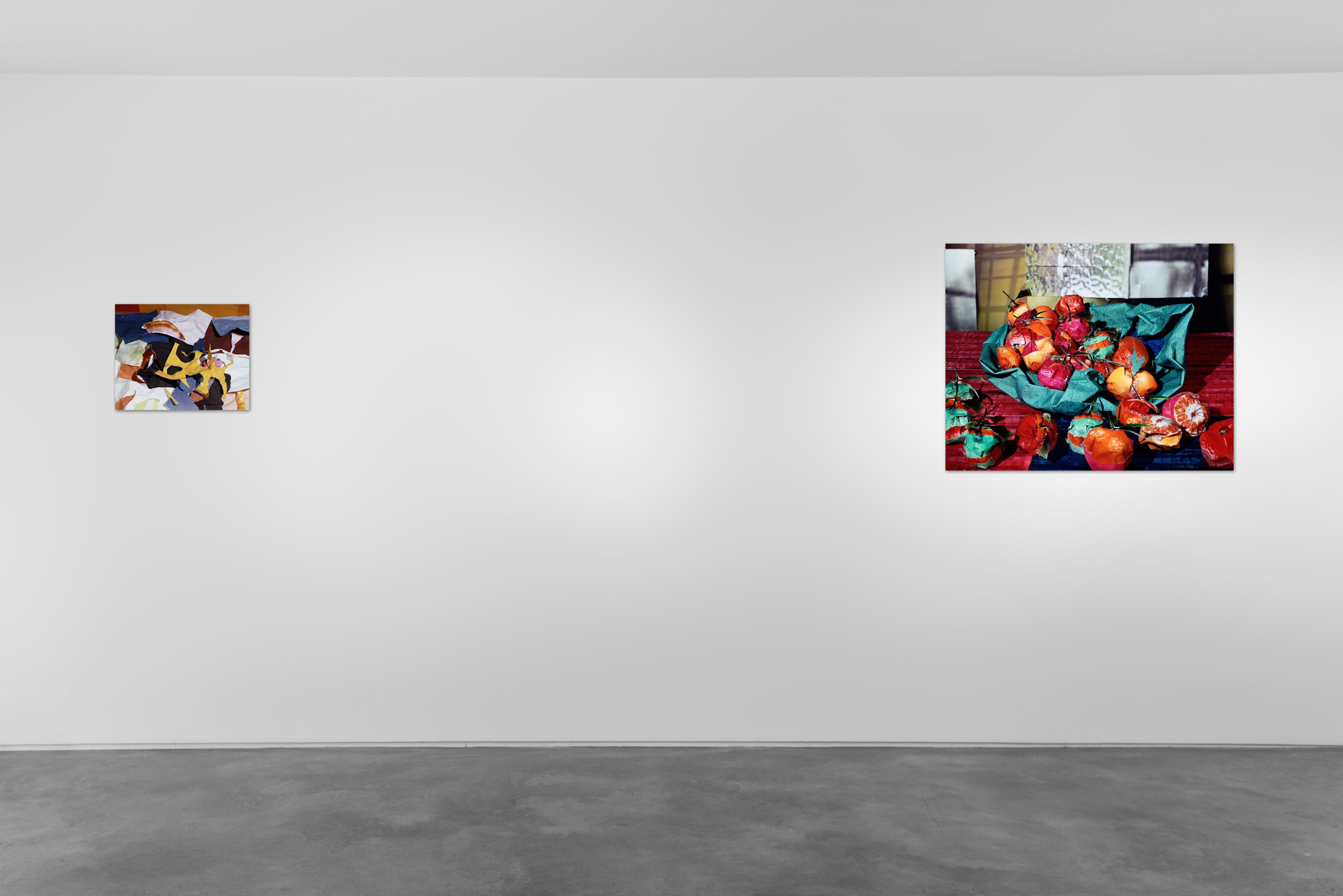WALLSPACE
619 West 27th Street
October 28–December 17, 2011

DANIEL GORDON: STILL LIFES, PORTRAITS AND PARTS, WALLSPACE, NEW YORK, OCT 28 – DEC 17, 2011.
The subject of Woman with a Blue Eye (all works cited, 2011)—like all the “sitters” for Daniel Gordon’s recent portraits—is a bust built from photographs. The woman they form is scarred with seams and rifts. One of her eyes is bigger and more brightly blue. Her hair is blonde and thickly pixelated in some spots, softly unfocused and brown in others. A purplish pattern—blue particles emerging from a red field like sandpaper’s grit—interrupts the skin in a swath of color from the right temple to the left cheek. I wondered if the artist had drawn the pattern with software. “There is no digital manipulation!” a gallery worker snapped. Softening, she added: “He probably found it on the Internet and printed it out.”
What’s at stake in editing and its absence? By printing, Gordon transforms the fluidity of the digital image into paper’s crisp substance; then he rips and folds to give several flat images the shape of what they collectively depict. Photography is photography. Cutting and pasting belong to sculpture. This distinction gives reason to marvel at the dexterity of Gordon’s compositions—at how a pair of profile cutouts can cast shadows to form a fan of four silhouettes, or at how spatial reality dissolves in the quasi-abstract in July 20, 2009, and how paper scraps seem to float between light and darkness. But the artist’s declared abstinence from “digital manipulation,” even though his pictures have visible traces of digital files, also suggests that the finished photograph has an untouchable surface, lying above—but still connected to—its inner workings.
 Daniel Gordon: Still Lifes, Portraits and Parts, Wallspace, New York, Oct 28 – Dec 17, 2011.
Daniel Gordon: Still Lifes, Portraits and Parts, Wallspace, New York, Oct 28 – Dec 17, 2011.
The wadded paper fruits of Nectarines in Orange and Blue, 2011, are distributed between the orange and blue halves of a table’s surface, with only one bisected fruit straddling the middle; its half-blue skin is broken to reveal the flesh and pit. On paper or onscreen, a picture never has the real interiority of fruits or people. But Gordon fabricates belief in the image’s depth, by photographing paper made into skins and rinds.


